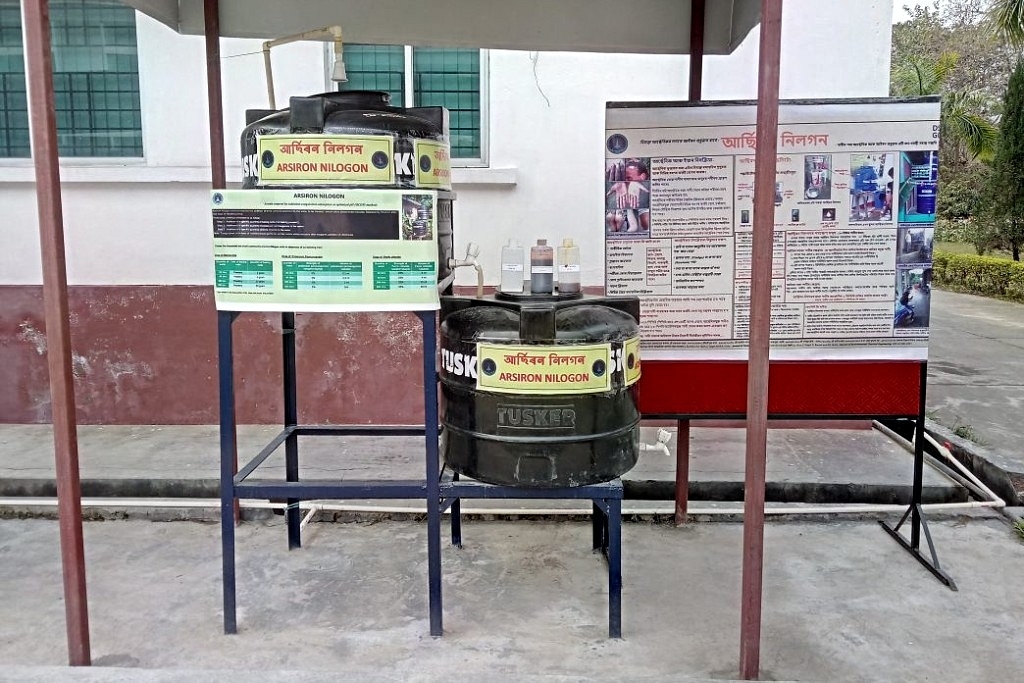Insta
To Improve Drinking Water Quality, Assam Develops Low-Cost Solution To Reduce Arsenic Poisoning

Arsiron Nilogon, the low-cost water purifier that lowers arsenic and iron content (Pic:Twitter)
Researchers at Tezpur University in Assam have developed Arsiron Nilogon (arsiron for arsenic and iron; nilogon is the Assamese equivalent for removal), a simple, low-cost technology that aims to shield people from the scourge of arsenic, reports The Hindustan Times.
This comes as a big relief for residents of Assam's Arsenic-hit Mazagaon village along the northern banks of the Brahmaputra, where many of them had patchy skin hyper-pigmentation, symptoms of arsenic poisoning.
Mazagaon village had the highest arsenic concentration in groundwater in Assam at 990 parts per billion (ppb) in a tube well, higher than the 50 ppb cap set by the Indian government.
The technology is proved to remove arsenic and iron from contaminated water while costing half a rupee (Re. 0.5) per 100 litres.
The purifier consists of two 200-litre or 500-litre plastic drums with taps, roosted on a bamboo stand and arranged like a podium stand. The top drum is where the chemical reaction takes place, while a sand-gravel bed in the bottom tank removes ferric oxide from the water.
The chemical process involves a two-stage process based on oxidation-coagulation-adsorption at optimised pH. It does not require electricity and could be constructed at home, says Robin Dutta, a professor at Tezpur University, and the inventor of the technology.
It is reported to be cheaper and safer than nano-technology-based purifiers as nano-based purifiers are said to be potentially carcinogenic.
North Eastern Regional Institute of Water and Land Management (NERIWLM) did the third-party technical evaluation of Arsiron Nilogon and found the filter to be capable of bringing down arsenic below the WHO’s recommended levels.
Support Swarajya's 50 Ground Reports Project & Sponsor A Story
Every general election Swarajya does a 50 ground reports project.
Aimed only at serious readers and those who appreciate the nuances of political undercurrents, the project provides a sense of India's electoral landscape. As you know, these reports are produced after considerable investment of travel, time and effort on the ground.
This time too we've kicked off the project in style and have covered over 30 constituencies already. If you're someone who appreciates such work and have enjoyed our coverage please consider sponsoring a ground report for just Rs 2999 to Rs 19,999 - it goes a long way in helping us produce more quality reportage.
You can also back this project by becoming a subscriber for as little as Rs 999 - so do click on this links and choose a plan that suits you and back us.
Click below to contribute.
Latest